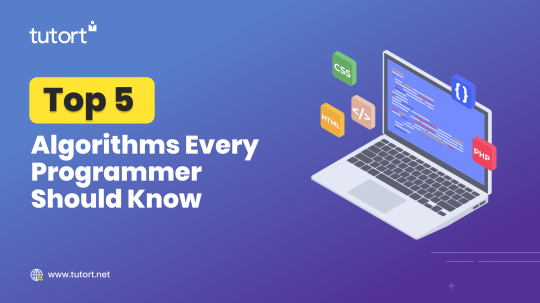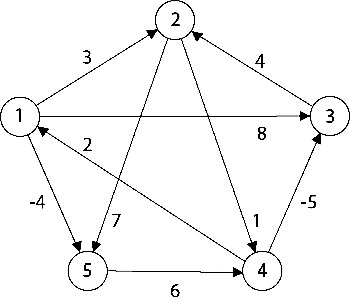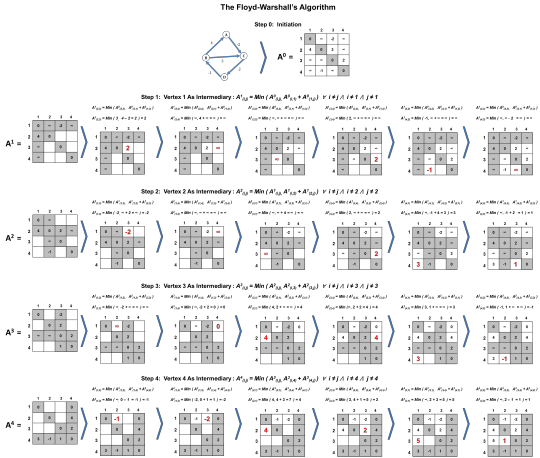#Warshall’s Algorithm
Explore tagged Tumblr posts
Text
CMSC 451 Homework 6 Solved
1. Using Warshall’s algorithm, compute the reflexive-transitive closure of the relation below. Show the matrix after the reflexive closure and then after each pass of the outermost for loop that computes the transitive closure. 0 0 0 0 1 1 0 0 0 0 0 0 1 1 0 0 0 1 0 0 1 0 1 0 1] 2. Using the matrix in the previous problem show the final result of executing Floyd’s algorithm on that matrix to…
0 notes
Text
CS542200 Parallel Programming Homework 3: All-Pairs Shortest Path
GOAL This assignment helps you manage to solve the all-pairs shortest path problem with CPU threads and then further accelerate the program with CUDA accompanied by Blocked Floyd-Warshall algorithm. In this assignment, you will realize how powerful GPUs can be. Finally, we encourage you to optimize your program by exploring different optimizing strategies for performance…
0 notes
Text
DSA Channel: The Ultimate Destination for Learning Data Structures and Algorithms from Basics to Advanced
DSA mastery stands vital for successful software development and competitive programming in the current digital world that operates at high speeds. People at every skill level from beginner to advanced developer will find their educational destination at the DSA Channel.
Why is DSA Important?
Software development relies on data structures together with algorithms as its essential core components. Code optimization emerges from data structures and algorithms which produces better performance and leads to successful solutions of complex problems. Strategic knowledge of DSA serves essential needs for handling job interviews and coding competitions while enhancing logical thinking abilities. Proper guidance makes basic concepts of DSA both rewarding and enjoyable to study.
What Makes DSA Channel Unique?
The DSA Channel exists to simplify both data structures along algorithms and make them accessible to all users. Here’s why it stands out:
The channel provides step-by-step learning progress which conservatively begins by teaching arrays and linked lists and continues to dynamic programming and graph theory.
Each theoretical concept gets backed through coding examples practically to facilitate easier understanding and application in real-life situations.
Major companies like Google, Microsoft, and Amazon utilize DSA knowledge as part of their job recruiter process. Through their DSA Channel service candidates can perform mock interview preparation along with receiving technical interview problem-solving advice and interview cracking techniques.
Updates Occur Regularly Because the DSA Channel Matches the Ongoing Transformation in the Technology Industry. The content uses current algorithm field trends and new elements for constant updates.
DSAC channels will be covering the below key topics
DSA Channel makes certain you have clear ideas that are necessary for everything from the basics of data structures to the most sophisticated methods and use cases. Highlights :
1. Introduction Basic Data Structures
Fundamentals First, You Always Need To Start With the Basics. Some of the DSA Channel topics are:
Memories storing and manipulating elements of Arrays
Linked Lists — learn linked lists: Singly Linked lists Dually linked lists and Circular linked list
Implementing Stacks and Queues — linear data structure with these implementations.
Hash Table: Understanding Hashing and its impact in the retrieval of Data.
2. Advanced Data Structures
If you want to get Intense: the DSA channel has profound lessons:
Graph bases Types- Type of Graph Traversals: BFS, DFS
Heaps — Come to know about Min Heap and Max Heap
Index Tries – How to store and retrieve a string faster than the fastest possible.
3. Algorithms
This is especially true for efficient problem-solving. The DSA Channel discusses in-depth:
Searching Algorithms Binary Search and Linear Search etc.
Dynamic Programming: Optimization of subproblems
Recursion and Backtracking: How to solve a problem by recursion.
Graph Algorithms — Dijkstra, Bellman-Ford and Floyd-Warshall etc
4. Applications of DSA in Real life
So one of the unique things (About the DSA channel) is these real-world applications of his DSA Channel.
Instead of just teaching Theory the channel gives a hands-on to see how it's used in world DSA applications.
Learning about Database Management Systems — Indexing, Query Optimization, Storage Techniques
Operating Systems – study algorithms scheduling, memory management,t, and file systems.
Machine Learning and AI — Learning the usage of algorithms in training models, and optimizing computations.
Finance and Banking — data structures that help us in identifying risk scheme things, fraud detection, transaction processing, etc.
This hands-on approach to working out will ensure that learners not only know how to use these concepts in real-life examples.
How Arena Fincorp Benefits from DSA?
Arena Fincorp, a leading financial services provider, understands the importance of efficiency and optimization in the fintech sector. The financial solutions offered through Arena Fincorp operate under the same principles as data structures and algorithms which enhance coding operations. Arena Fincorp guarantees perfect financial transactions and data protection through its implementation of sophisticated algorithms. The foundational principles of DSA enable developers to build strong financial technological solutions for contemporary financial complications.
How to Get Started with DSA Channel?
New users of the DSA Channel should follow these instructions to maximize their experience:
The educational process should start with fundamental videos explaining arrays together with linked lists and stacks to establish a basic knowledge base.
The practice of DSA needs regular exercise and time to build comprehension. Devote specific time each day to find solutions for problems.
The platforms LeetCode, CodeChef, and HackerRank provide various DSA problems for daily problem-solving which boosts your skills.
Join community discussions where you can help learners by sharing solutions as well as working with fellow participants.
Students should do Mock Interviews through the DSA Channel to enhance their self-confidence and gain experience in actual interview situations.
The process of learning becomes more successful when people study together in a community. Through the DSA Channel students find an energetic learning community to share knowledge about doubts and project work and they exchange insight among themselves.
Conclusion
Using either data structures or algorithms in tech requires mastery so they have become mandatory in this sector. The DSA Channel delivers the best learning gateway that suits students as well as professionals and competitive programmers. Through their well-organized educational approach, practical experience and active learner network the DSA Channel builds a deep understanding of DSA with effective problem-solving abilities.
The value of data structures and algorithms and their optimized algorithms and efficient coding practices allows companies such as Arena Fincorp to succeed in their industries. New learners should begin their educational journey right now with the DSA Channel to master data structures and algorithms expertise.
0 notes
Text
CS542200 Parallel Programming Homework 3: All-Pairs Shortest Path
GOAL This assignment helps you manage to solve the all-pairs shortest path problem with CPU threads and then further accelerate the program with CUDA accompanied by Blocked Floyd-Warshall algorithm. In this assignment, you will realize how powerful GPUs can be. Finally, we encourage you to optimize your program by exploring different optimizing strategies for performance…
0 notes
Text

What Does Big O(N^2) Complexity Mean?
It's critical to consider how algorithms function as the size of the input increases while analyzing them. Big O notation is a crucial statistic computer scientists use to categorize algorithms, which indicates the sequence of increase of an algorithm's execution time. O(N^2) algorithms are a significant and popular Big O class, whose execution time climbs quadratically as the amount of the input increases. For big inputs, algorithms with this time complexity are deemed inefficient because doubling the input size will result in a four-fold increase in runtime.
This article will explore what Big O(N^2) means, analyze some examples of quadratic algorithms, and discuss why this complexity can be problematic for large data sets. Understanding algorithmic complexity classes like O(N^2) allows us to characterize the scalability and efficiency of different algorithms for various use cases.
Different Big Oh Notations.
O(1) - Constant Time:
An O(1) algorithm takes the same time to complete regardless of the input size. An excellent example is to retrieve an array element using its index. Looking up a key in a hash table or dictionary is also typically O(1). These operations are very fast, even for large inputs.
O(log N) - Logarithmic Time:
Algorithms with log time complexity are very efficient. For a sorted array, binary search is a classic example of O(log N) because the search space is halved each iteration. Finding an item in a balanced search tree also takes O(log N) time. Logarithmic runtime grows slowly with N.
O(N) - Linear Time:
Linear complexity algorithms iterate through the input at least once. Simple algorithms for sorting, searching unsorted data, or accessing each element of an array take O(N) time. As data sets get larger, linear runtimes may become too slow. But linear is still much better than quadratic or exponential runtimes.
O(N log N) - Log-Linear Time:
This complexity results in inefficient sorting algorithms like merge sort and heap sort. The algorithms split data into smaller chunks, sort each chunk (O(N)) and then merge the results (O(log N)). Well-designed algorithms aimed at efficiency often have log-linear runtime.
O(N^2) - Quadratic Time:
Quadratic algorithms involve nested iterations over data. Simple sorting methods like bubble and insertion sort are O(N^2). Matrix operations like multiplication are also frequently O(N^2). Quadratic growth becomes infeasible for large inputs. More complex algorithms are needed for big data.
O(2^N) - Exponential Time:
Exponential runtimes are not good in algorithms. Adding just one element to the input doubles the processing time. Recursive calculations of Fibonacci numbers are a classic exponential time example. Exponential growth makes these algorithms impractical even for modestly large inputs.
What is Big O(N^2)?
An O(N2) algorithm's runtime grows proportionally to the square of the input size N.
Doubling the input size quadruples the runtime. If it takes 1 second to run on 10 elements, it will take about 4 seconds on 20 elements, 16 seconds on 40 elements, etc.
O(N^2) algorithms involve nested iterations through data. For example, checking every possible pair of elements or operating on a 2D matrix.
Simple sorting algorithms like bubble sort, insertion sort, and selection sort are typically O(N^2). Comparing and swapping adjacent elements leads to nested loops.
Brute force search algorithms are often O(N^2). Checking every subarray or substring for a condition requires nested loops.
Basic matrix operations like multiplication of NxN matrices are O(N^2). Each entry of the product matrix depends on a row and column of the input matrices.
Graph algorithms like Floyd-Warshall for finding the shortest paths between all vertex pairs is O(N^2). Every possible path between vertices is checked.
O(N^2) is fine for small inputs but becomes very slow for large data sets. Algorithms with quadratic complexity cannot scale well.
For large inputs, more efficient algorithms like merge sort O(N log N) and matrix multiplication O(N^2.807) should be preferred over O(N^2) algorithms.
However, O(N^2) may be reasonable for small local data sets where inputs don't grow indefinitely.
If you want more learning on this topic, please read more about the complexity on our website.
0 notes
Link
Hands-on explanations assisted by simple JavaScript codeContinue reading on Towards Data Science » #AI #ML #Automation
0 notes
Text
5 Algorithms Every Programmer Should Know To Code Like a Boss

Algorithms play a crucial role in the software development industry, particularly in SDE (Software Development Engineer) interviews. Mastering the right algorithms can make a significant difference in landing that dream job or promotion. In this article, we will explore the importance of algorithms in SDE interviews and discuss the top 5 algorithms that every programmer should know. So, let's dive in!
Importance of Algorithms in SDE Interviews
Algorithms are step-by-step procedures or sets of rules used to solve specific problems. In the context of SDE interviews, algorithms are essential for evaluating a candidate's problem-solving skills, logical thinking, and understanding of fundamental programming concepts. Here's why algorithms are crucial in SDE interviews:
Problem-Solving Skills: SDE interviews often include challenging coding problems that require efficient and optimized solutions. Algorithms provide a systematic approach to solving these problems, showcasing a candidate's problem-solving abilities.
Efficiency and Optimization: Algorithms help in designing efficient and optimized solutions that minimize time complexity and maximize performance. Employers look for candidates who can write code that is both correct and efficient.
Algorithmic Thinking: Understanding algorithms enables candidates to think algorithmically, breaking down complex problems into smaller, more manageable parts. This type of thinking is essential for designing scalable and robust software solutions.
Data Structures: Algorithms and data structures go hand in hand. Knowing algorithms helps candidates choose the right data structures to store and manipulate data efficiently.
Top 5 Algorithms Every Programmer Should Know
Now that we understand the importance of algorithms let's explore the top 5 algorithms that every programmer should be familiar with:
1. Binary Search Algorithm
The binary search algorithm is a fundamental algorithm used to search for an element in a sorted array efficiently. It follows a divide-and-conquer approach, repeatedly dividing the search space in half until the target element is found.
2. Breadth First Search (BFS) Algorithm
BFS is a graph traversal algorithm that explores all the vertices of a graph in breadth-first order. It starts at a given source vertex and visits all its neighboring vertices before moving to the next level.
3. Depth First Search (DFS) Algorithm
DFS is another graph traversal algorithm that explores all the vertices of a graph in depth-first order. It starts at a given source vertex and explores as far as possible along each branch before backtracking.
4. Merge Sort Algorithm
Merge sort is a comparison-based sorting algorithm that follows the divide-and-conquer approach. It divides the input array into two halves, sorts them separately, and then merges them to obtain a sorted array.
5. Quicksort Algorithm
Quicksort is another comparison-based sorting algorithm that also follows the divide-and-conquer approach. It selects a pivot element and partitions the array around the pivot, placing all smaller elements to its left and larger elements to its right. It then recursively sorts the subarrays.
These top 5 algorithms are widely used in various applications and serve as building blocks for more complex algorithms. Other algorithms one should know are- Bubble Sort, Dijkstra’s Algorithm, Knapsack Problem, Floyd Warshall Algorithm, Kruskal’s Algorithms. Mastering them not only enhances problem-solving skills but also forms a strong foundation for tackling diverse programming challenges.
Bottom Line
Algorithms are the backbone of software development and play a vital role in SDE interviews. Understanding and implementing the right algorithms can make a significant difference in a programmer's career. By mastering the top 5 algorithms discussed in this article, programmers can demonstrate their problem-solving abilities, logical thinking, and efficiency in coding.
If you're looking to level up your software development skills and get hands-on experience with real-world projects, Tutort Academy Full Stack Software Developer Courses are the perfect choice. So, start practicing these algorithms today and boost your chances of success in SDE interviews!
0 notes
Text
Different Types of Graphs and its application (Data Structure)
Graphs, Graph Representation, undirected graph, directed graph, Depth first search, Breadth first search, Spanning tree, Prim's Algorithm, Kruskal’s Algorithm, Shortest path, Dijkstra’s algorithm, Floyd’s Algorithm, Topological ordering on directed acyclic graphs, Topological ordering algorithm, Warshall’s Algorithm, Hamiltonian Paths, Applications of graphs
http://www.knowsh.com Graphs, Graph Representation, undirected graph, directed graph, Depth first search, Breadth first search, Spanning tree, Prim’s Algorithm, Kruskal’s Algorithm, Shortest path, Dijkstra’s algorithm, Floyd’s Algorithm, Topological ordering on directed acyclic graphs, Topological ordering algorithm, Warshall’s Algorithm, Hamiltonian Paths, Applications of graphs…
View On WordPress
#Applications of graphs#Breadth first search#Depth first search#Dijkstra’s algorithm#Directed Graph#Floyd’s Algorithm#Graph Representation#Graphs#Hamiltonian Paths#Kruskal’s Algorithm#Prim&039;s Algorithm#Shortest path#Spanning tree#Topological ordering algorithm#Topological ordering on directed acyclic graphs#undirected graph#Warshall’s Algorithm
0 notes
Text
CITS3402 Assignment 2 2019: Shortest Paths Solved
CITS3402 Assignment 2 2019: Shortest Paths Solved
1 Details The goal of this project is to design an implement parallel algorithms to solve the all-pairs-shortest path problem for a number of large graphs using either Dijkstra’s or Floyd-Warshall algorithms. You will use C with the MessagePassing Interface (MPI) to write parallelized code. You will also need to observe and comment on how speedup is affected by changing the size of the…

View On WordPress
0 notes
Text
The Floyd Warshall Algorithm via /r/coding

The Floyd Warshall Algorithm https://ift.tt/31uy12W Submitted July 28, 2020 at 04:58AM by shreex7522 via reddit https://ift.tt/2CTXM2I
0 notes
Text
CS542200 Parallel Programming Homework 3: All-Pairs Shortest Path
GOAL This assignment helps you manage to solve the all-pairs shortest path problem with CPU threads and then further accelerate the program with CUDA accompanied by Blocked Floyd-Warshall algorithm. In this assignment, you will realize how powerful GPUs can be. Finally, we encourage you to optimize your program by exploring different optimizing strategies for performance…
0 notes
Text
CS542200 Parallel Programming Homework 3: All-Pairs Shortest Path
GOAL This assignment helps you manage to solve the all-pairs shortest path problem with CPU threads and then further accelerate the program with CUDA accompanied by Blocked Floyd-Warshall algorithm. In this assignment, you will realize how powerful GPUs can be. Finally, we encourage you to optimize your program by exploring different optimizing strategies for performance…
0 notes
Text

Key Graph Based Shortest Path Algorithms With Illustrations - Part 2: Floyd–Warshall's And A-Star Algorithms http://bit.ly/3aJJcqD http://bit.ly/3aJJcqD
0 notes